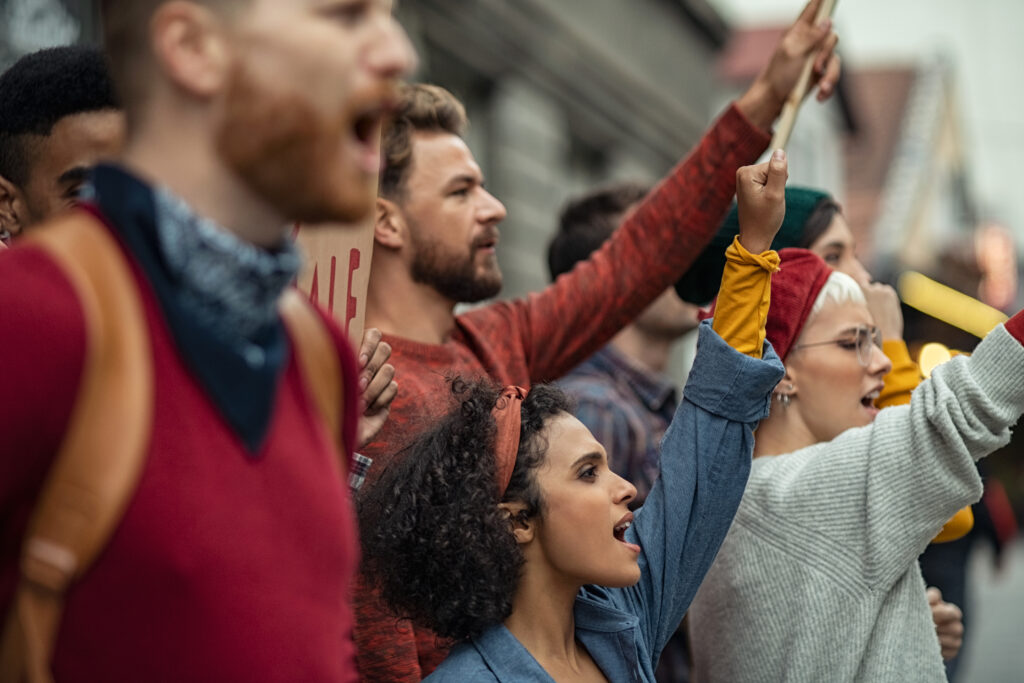Employment Law Report
Can a Union Be Liable in State Court for Destruction of Property When Striking? U.S. Supreme Court Says Yes, Sometimes

By: Isaac Keller, Wyatt Summer Associate
Disputes between labor organizations and companies are almost always resolved under federal law. But when a union acts outside the protections of federal labor laws, they could be liable to companies in state court. Or so said the Supreme Court on June 1 in Glacier Northwest, Inc. v. Teamsters, which held that the National Labor Relations Act (“NLRA”) does not prevent a company from bringing state tort claims relating to the destruction of company property during an employee strike.
Glacier Northwest, Inc. (“Glacier”) is a concrete delivery company operating in the state of Washington. Delivering concrete is no simple task. It is highly perishable and prone to hardening when not in motion, so the concrete is made to order and mixed only when delivery trucks are ready. To preserve the concrete during transit, Glacier uses ready-mix trucks with rotating drums that prevent the concrete from hardening, and it is imperative that Glacier deliver the concrete quickly.
This litigation stems from a strike Glacier’s truck drivers conducted. They are members of the International Brotherhood of Teamsters Local Union No. 174 (“Teamsters”). Shortly after a collective-bargaining agreement between the two parties expired, the Teamsters called for a strike after Glacier had prepared and loaded a large amount of concrete for delivery. The strike ensued. As a result, all of the concrete prepared that day hardened and became useless. So Glacier sued Teamsters in Washington state court alleging the Teamsters intentionally destroyed company property and that the conduct amounted to conversion and trespass to chattels.
Teamsters responded by moving to dismiss Glacier’s claims on the basis that the NLRA, at least arguably, barred the state tort law claims. The NLRA is a federal law that protects employees’ rights “to self-organization, to form, join, or assist labor organizations . . . and to engage in other concerted activities for the purpose of collective bargaining or other mutual aid or protection.” For over sixty years, the Supreme Court has applied a doctrine known as Garmon preemption to hold that “States cannot regulate conduct ‘that the NLRA protects, prohibits, or arguably protects or prohibits.’” See San Diego Building Trades Council v. Garmon, 359 U.S. 236, 245 (1959). Preemption is the term for the simple rule that when federal law and state law conflict, federal law controls. But Garmon preemption goes a step further to give the National Labor Relations Board (“NLRB”) the full authority to apply the NLRA even when it only arguably applies. So the Teamsters argued that Glacier’s common-law state tort claims should not go forward.
Ultimately, the Washington Supreme Court agreed with the Teamsters that the case should be dismissed. The Supreme Court thus agreed to answer whether the NLRA, a federal law, preempted state law tort claims against a union for intentionally destroying an employer’s property in the course of a labor dispute. It said no—here’s why:
Put simply, the NLRA does not protect an absolute right to strike. In the Supreme Court’s view, the NLRB follows the rule that the NLRA does not shield strikers who fail to take “reasonable precautions” to protect an employer’s property in the event of a labor dispute. Because the Union knew of the perishable nature of the concrete, that the product would eventually harden, and that Glacier was attempting to deliver the concrete to a large number of customers, the harm to Glacier was “foreseeable and serious.” According to the Court, “the Union’s failure to take even minimal precautions illustrates its failure to fulfil its duty.”
Further, the Supreme Court drew attention to the fact that, according to the allegations in Glacier’s complaint, the Union not only failed to take reasonable precautions, but in fact “executed the strike in a manner designed to achieve those [harmful] results” and “prompted the creation of the perishable product.” Put plainly, the Union’s strike in this case “exceeded the limits of conduct protected by the [NLRA],” so Garmon preemption did not apply.
Employers should note that whether the NLRA preempts state law claims is still a case-by-case determination. The preemption will depend on whether or not the conduct in question is “protected” or “unprotected” by the NLRA. The Court explained that “the Union’s decision to initiate the strike during the workday and failure to give Glacier specific notice do not themselves render the Union’s conduct unprotected… [but] are relevant considerations in evaluating whether strikers took reasonable precautions, whether harm to property was imminent, and whether that danger was foreseeable.”
If there is a primary takeaway, it is that an employee’s intentional destruction of the property of an employer during a labor dispute will likely not be protected conduct under the NLRA, and a state-law claim will not be preempted. But there are still situations where the NLRA does preempt state law. Under Garmon, if the conduct is protected, or even arguably protected (for example, if employees did take reasonable precautions to protect an employer’s property when organizing), the NLRA may still preempt state tort law.
For now, employers should be aware of the NLRA’s limited protections. The NLRA will only shield an employees’ protected conduct, not conduct that exceeds the scope of the NLRA. In other words, if an employee does not take “reasonable precautions” to preserve an employer’s property, an employer could have a valid state tort claim against the employee that will not be preempted by the NLRA. This is particularly true when the employees’ conduct is intentional, like the Teamsters’ conduct in Glacier.